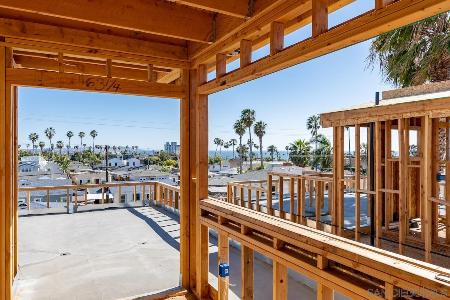
New California Housing Law has not Encouraged Building
Once seen as a possible death knell for single-family-home neighborhoods in California, a new law meant to create more duplexes has instead done little to encourage construction in some of the largest cities in the state, according to a new report.
Senate Bill 9 was introduced two years ago as a way to help solve California’s severe housing crunch by allowing homeowners to convert their homes into duplexes on a single-family lot or divide the parcel in half to build another duplex for a total of four units. The law went into effect at the start of 2022.
The bill received bipartisan support and ignited fierce debate between its backers, who said SB 9 was a much-needed tool to add housing options for middle-income Californians, and critics, who blasted it as a radical one-size-fits-all policy that undermined local government control.
Neither argument has so far proved to be true.
Across 13 cities in the state, SB 9 projects are “limited or nonexistent,” according to a new study by the UC Berkeley Terner Center for Housing Innovation.
The report focused on cities considered high-opportunity areas for duplexes because they’ve reported significant increases in the construction of accessory dwelling units — also known as granny flats, casitas or ADUs — in recent years and have available single-family properties for possible divided lots. ADUs are small, free-standing homes most often built in the backyards of existing single-family homes.
The cities are Anaheim, Bakersfield, Berkeley, Burbank, Danville, Long Beach, Los Angeles, Sacramento, San Diego, San Francisco, San Jose, Santa Maria and Saratoga.
By the end of November, the cities had collectively received 282 applications for SB 9 projects, and had approved only 53. Los Angeles accounted for the bulk of applications with 211 submitted and 38 approved, according to the report. San Francisco received 25 applications and had approved four, while San Diego received seven and had approved none.
Three cities received one application, and in Bakersfield, Danville and Santa Maria, zero were submitted.
Applications for dividing lots seem to be even less popular than for building duplexes. Just 100 applications were submitted, the report noted, and 28 had been approved.
David Garcia, Terner Center’s policy director, said SB 9 is only in its first year of implementation and should be given more time before it’s judged as ineffective.
“It doesn’t seem like Senate Bill 9 in its first year has resulted in very meaningful amounts of new housing,” Garcia said. “Pretty much everywhere you look, Senate Bill 9 activity is very marginal. It is nonexistent in some places.”
Homeowners right now have an easier time building an ADU than a duplex, thanks to local and state laws that have eased barriers to construction in recent years, Garcia said. It took multiple rounds of legislation to see productive ADU development, and the same will probably be true for SB 9 projects, he said.
To replicate that success, the Terner Center report suggested cutting fees associated with new duplex development, or adding more uniform standards for SB 9 projects to ensure local governments can’t attach subjective criteria that discourage applications, such as architectural design requirements or stringent landscaping rules. It also proposed revising a mandate that homeowners who split their lots must live in one of the units for at least three years, a key concession lawmakers made to reduce opposition from organizations worried about gentrification.
Garcia and other housing experts said slow progress could also be attributed to the effects of the COVID-19 pandemic, when prices for building materials shot up and homeowners and buyers faced significant market uncertainty. That was followed by high inflation and interest rates.
But other factors could be contributing to sluggish SB 9 interest.
Matthew Lewis, spokesperson for California YIMBY, a housing advocacy organization that supported SB 9, said both ADUs and duplexes have their financial and logistical pros and cons.
ADUs are an ideal way to generate some “passive income” from a renter, Lewis said, and make great homes for aging parents or young adult children. Duplexes are good for that too, but the additional units can be sold separately for even greater economic opportunity.
On the other hand, ADUs are typically a property extension of the main home, so it can be difficult or even impossible to separately sell the extra unit. Duplexes require significantly more financing, and the addition of a separate sewer line and water service.
“The reality is people will follow the path of least resistance to building the house they want,” Lewis said, adding that it could be worth going back to the drawing board to ensure local governments are doing what they can to ease burdens to duplex development.
Although the Terner Center report offers legislators a limited snapshot of how SB 9 has worked so far, the state is also expected to have more robust data available this summer.
Source: by Hannah Wiley




